


Aadarsh Bharat Enviro Pvt Ltd became the first & only urban center to scientifically treat the reject arising out of waste. ScientificLandfillisusedtodiscardthegarbageatascientificlandfillsite.Disposalof wasteinscientificlandfilleliminatesthe risk of groundwater contamination, methane emission, uncontrollable fires and resultant cardiovascular diseases.


Scientific Landfills and Methane Management
Scientific landfills help reduce the production of methane by acting as a degassing system. Methane is generated slowly in scientific landfills, compared to ordinary landfills, as the layers absorb most of the impurities in the waste disposed of. Vertical wells installed in scientific landfills regularly extract methane, which can then be used for energy generation.
These landfills are carefully designed structures built into or on top of the ground, where trash is isolated from the surrounding environment (groundwater, air, and rain). This isolation is achieved using a bottom liner and daily soil cover. Similar to sanitary landfills, a clay liner is used to prevent the trash from coming into contact with the environment.
Existing MSW Processing Facility
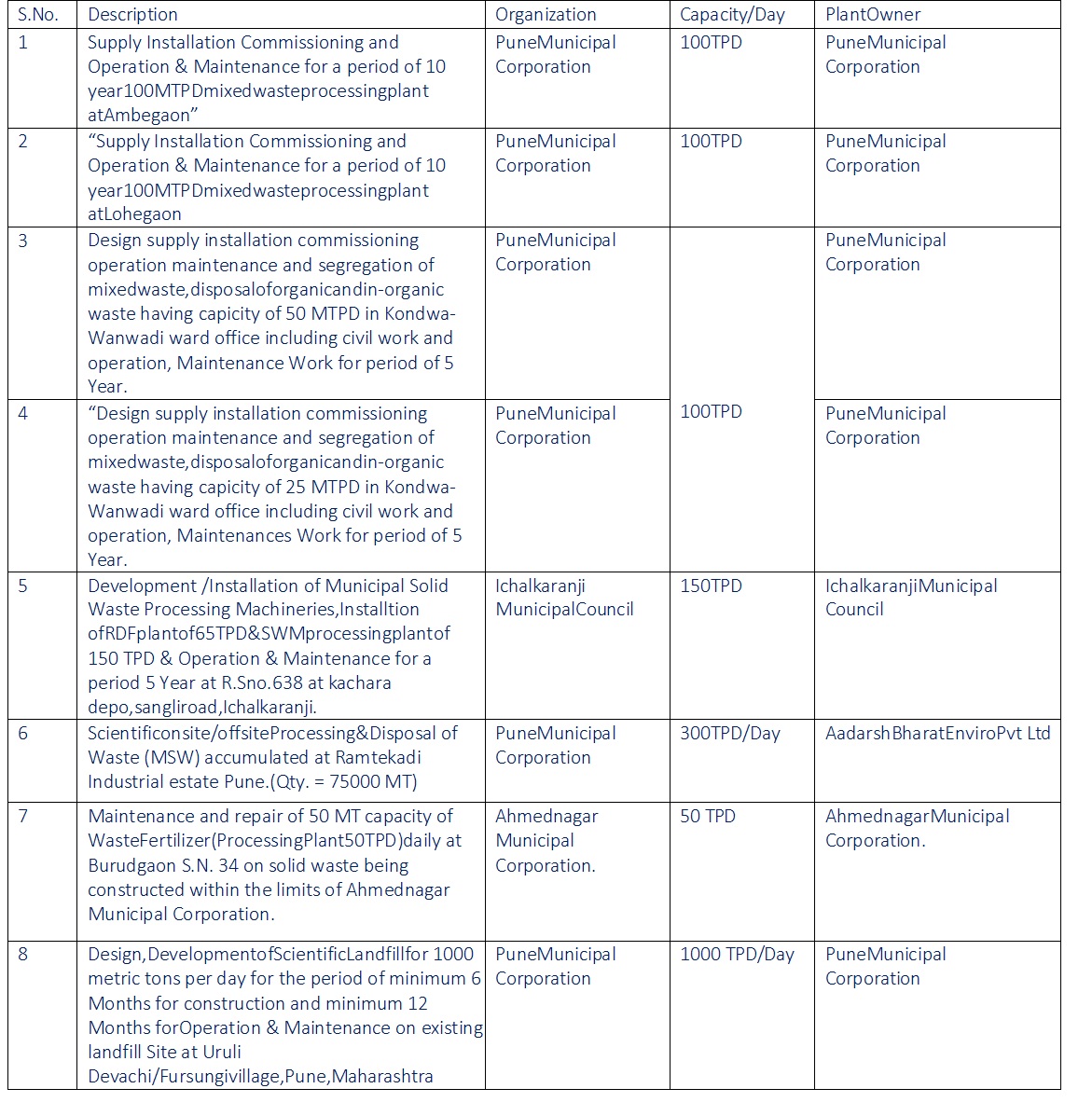
Project: Design, supply, installation, commissioning, operation, maintenance, and segregation of mixed waste, along with the disposal of organic and inorganic waste, with a capacity of 100 MTPD in the Kondwa-Wanwadi Ward Office. This includes civil work and operational maintenance for a period of 5 years.
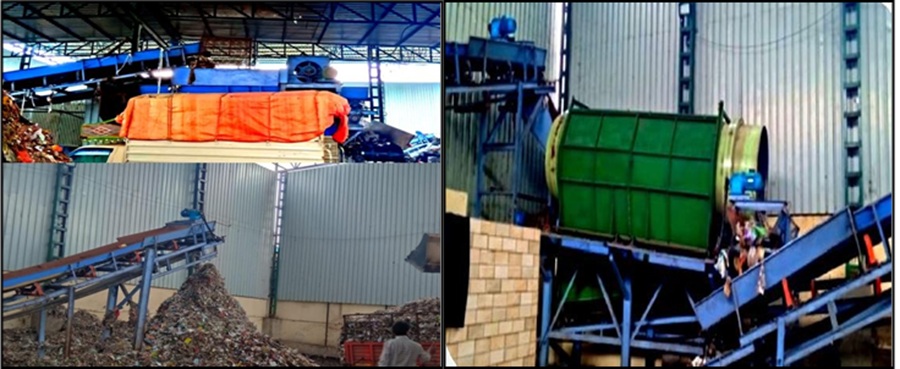
Project: Supply, installation, commissioning, and operation & maintenance for a period of 10 years for a 100 MTPD mixed waste processing plant at Ambegaon. Additionally, supply, installation, commissioning, and operation & maintenance for a period of 10 years for a 100 MTPD mixed waste processing plant at Lohegaon. (Merged both plants as per PMC, Total Capacity = 200 TPD)
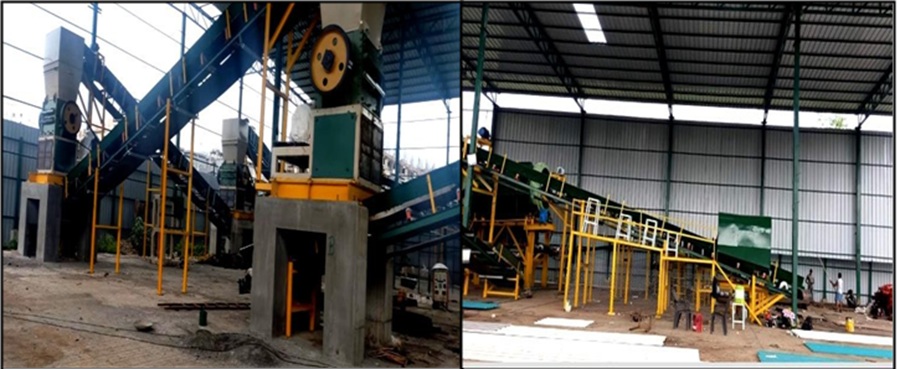
Project: Development/installation of municipal solid waste processing machineries, installation of an RDF plant with a capacity of 65 TPD, and an SWM processing plant with a capacity of 150 TPD. Additionally, operation and maintenance for a period of 5 years at R.S. No. 638, Kachara Depot, Sangli Road, Ichalkaranji.
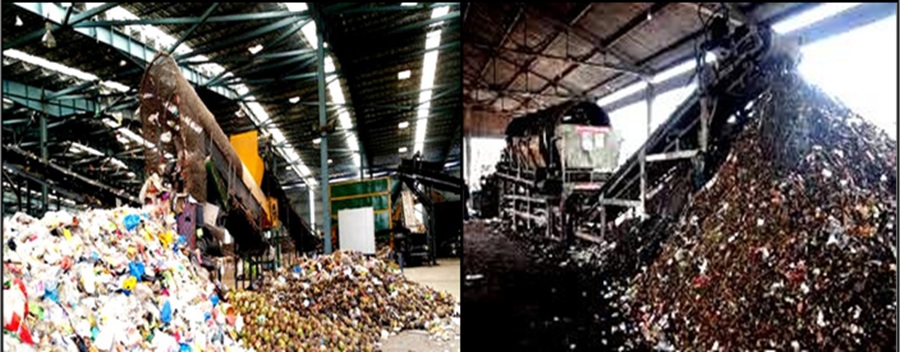
Project: Maintenance and repair of the 50 MT capacity Waste Fertilizer Processing Plant (50 TPD) daily at Burudgaon S.N. 34, on solid waste being constructed within the limits of Ahmednagar Municipal Corporation.
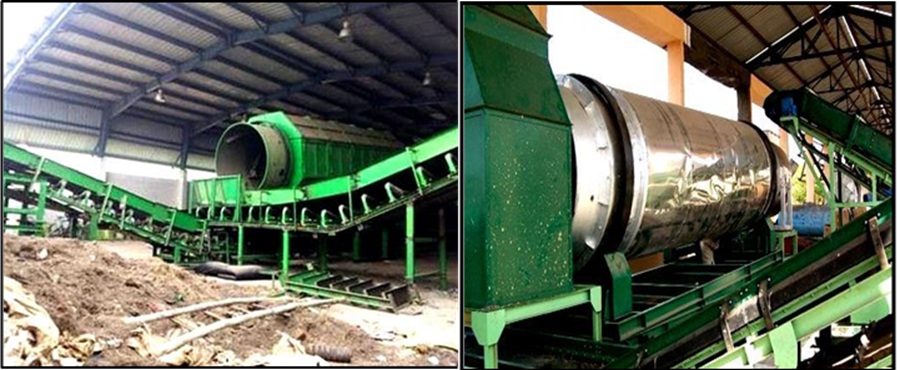
Project: Scientific on-site/off-site processing and disposal of Municipal Solid Waste (MSW) accumulated at Ramtekadi Industrial Estate, Pune. (Qty. = 75,000 MT or 300 TPD/Day)
Bio-mining includes segregation of waste to separate sand that can be used for agriculture and dry waste that will be sent to cement factories to be used as fuel. After completion of the entire process, the land will become vacant and can be used for implementing other projects.
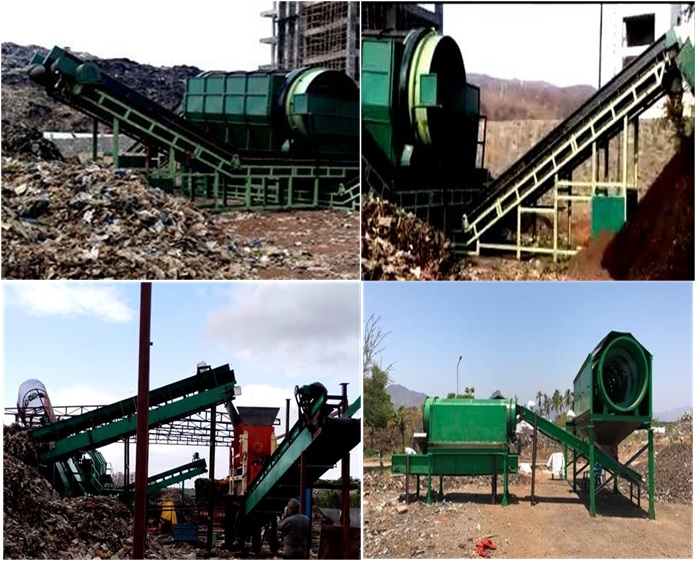
Our challenging technology for municipal solid waste processing by tromels segregation, eddy current metal separator, ADS, plastic separator, stone separator, fine cutting shredders & transfer conveyors, EOT cranes & hydraulic grab buckets, etc.
Even when the whole world was battling with the Corona pandemic, even at that time, the Aadarsh Bharat Group rendered its service day and night and stood together in the Corona fight with our country.
Ongoing Major Project: Municipal Corporation Gurugram
Name of Work:
Selection of Contractor for Remediation and Reclamation of Existing Dumpsite at Bandhwari in Municipal Corporation, Gurugram (Phase South).
Tender Reference:
Remediation/South/18.11.2022 – “Inviting tender for 5.00 Lakh MT treatment of legacy waste at SLF on the risk and cost of M/s EcoGreen Pvt. Ltd., Gurugram-Faridabad Phase South.”
Legacy Waste Management in Prominent Indian Cities:
Many prominent cities in India are failing in legacy waste management, as these dumpsites have exceeded their capacity. The waste collected and kept for years on barren land or in dedicated landfills is called legacy waste.
According to the Swachh Bharat Report (2020), India loses over 1,250 hectares of usable land every year due to the disposal of municipal solid waste. Furthermore, the National Green Tribunal stated that more than 10,000 hectares of usable urban land is locked up under 3,159 legacy waste dumpsites in the country, as reported by The Down to Earth.
The Solid Waste Management Rules, 2016 now mandate bio-mining of legacy waste instead of simply ‘capping’ (covering the waste with soil). These rules focus on the segregation of waste at the source, the responsibility of manufacturers to dispose of sanitary and packaging wastes, and user fees for collection, disposal, and processing from bulk generators.
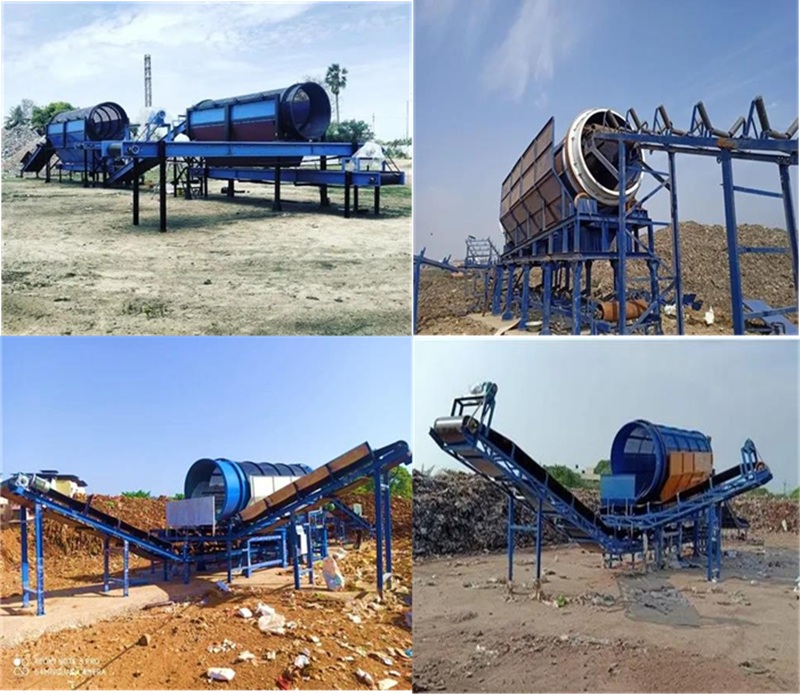
Promoting the use of compost and conversion of waste into energy, the rule also includes suggestions on how biodegradable waste should be processed, treated, and disposed of.
Biomining has many advantages, including zero emissions and leaving near-zero residues, helping in reducing soil pollution, soil contamination, and groundwater contamination. It reduces greenhouse gas emissions, and no energy is required for the process. Further,
the reclaimed land can be used for other development purposes.
Landfills are among the major sources of disease, and clearing them can help in decreasing vector-borne diseases. The U.S. Public Health lists 22 diseases that develop due to improper handling of solid waste. Biomining is an eco-friendly method that allows us to recycle resources by extracting useful components from waste, such as metal, compost, and fertilizers.
Biomining is restricted to only biodegradable compounds and takes time to show results. One of the significant environmental risks is the risk of leakage and treatment of the acidic, metal-rich solution created by the microbes. However, it can be managed if done in controlled conditions, following protocols.